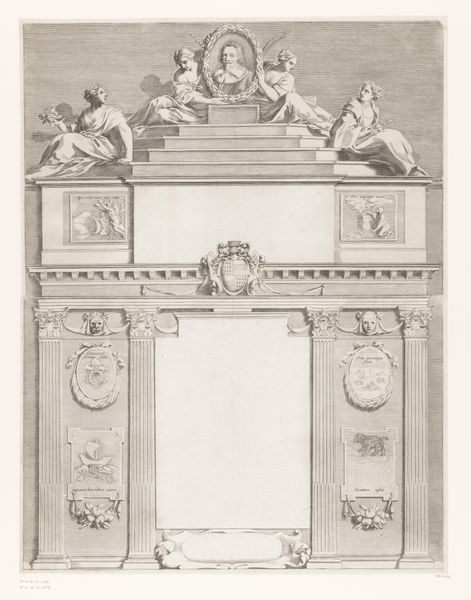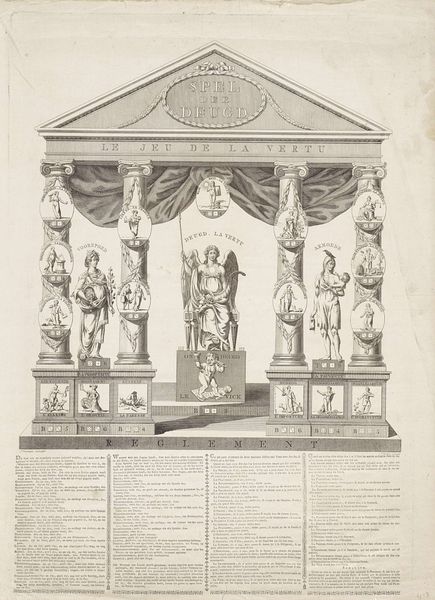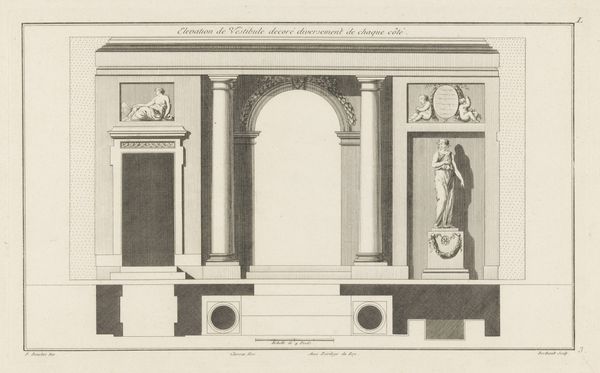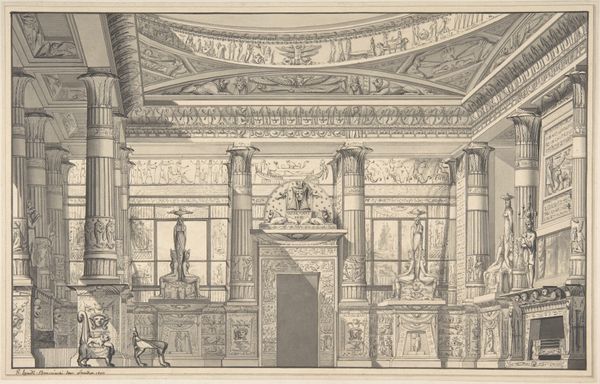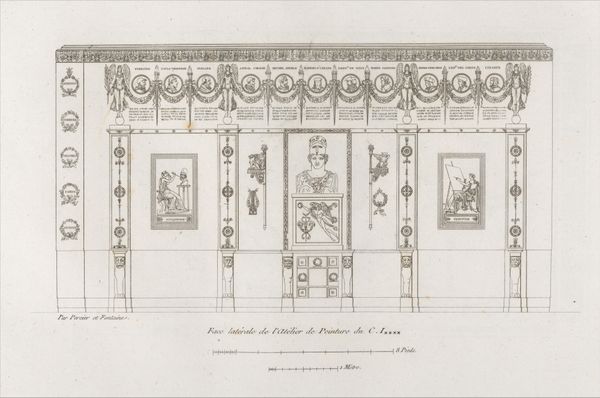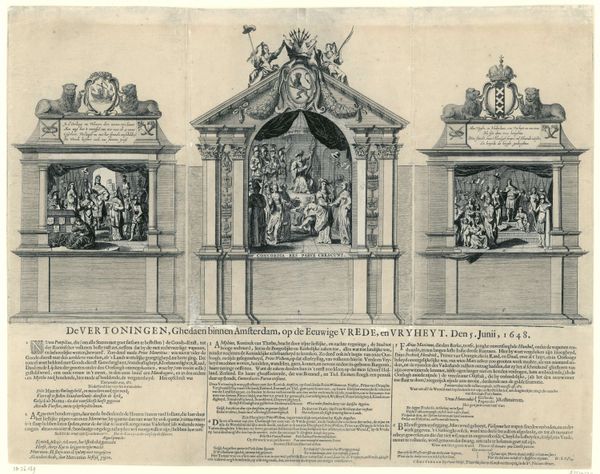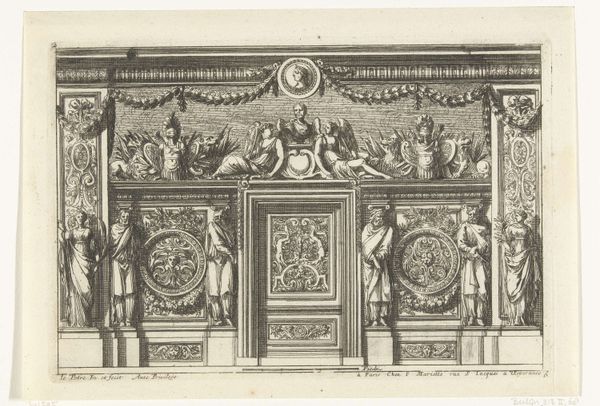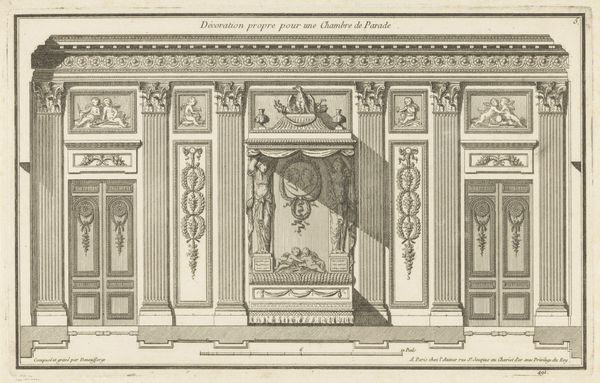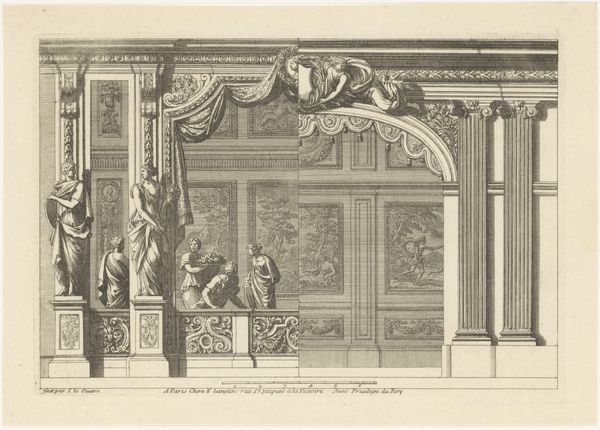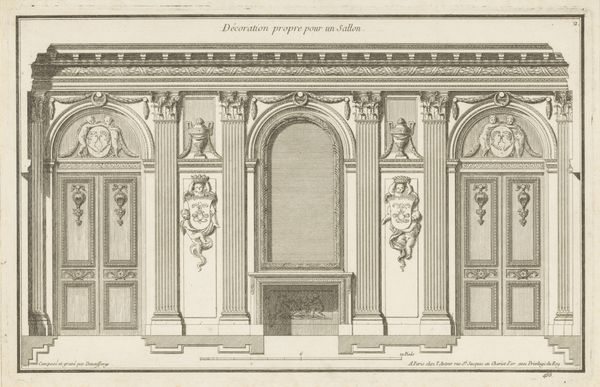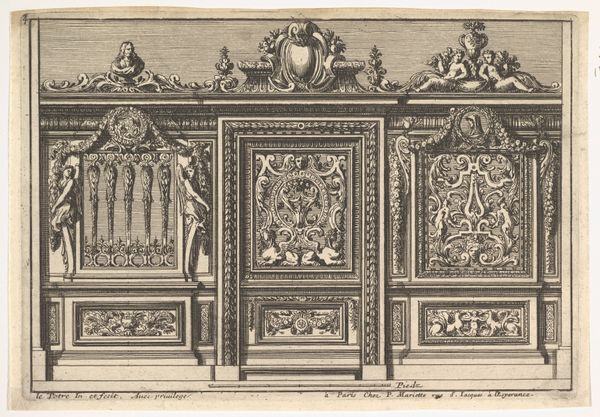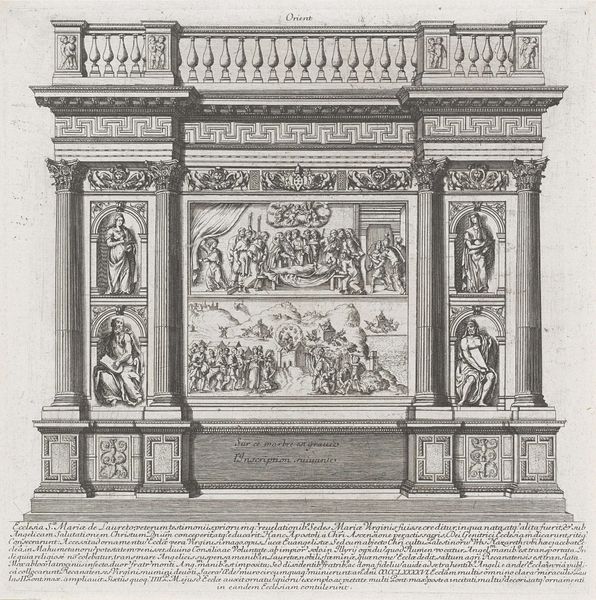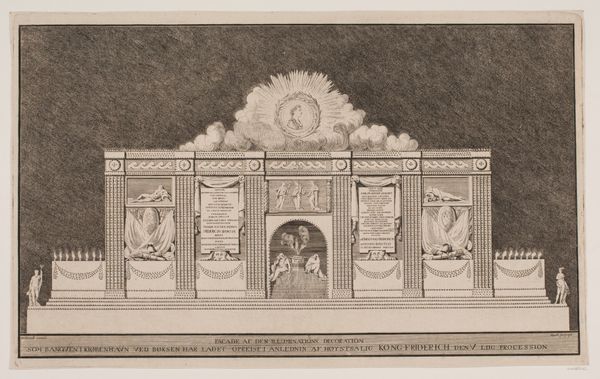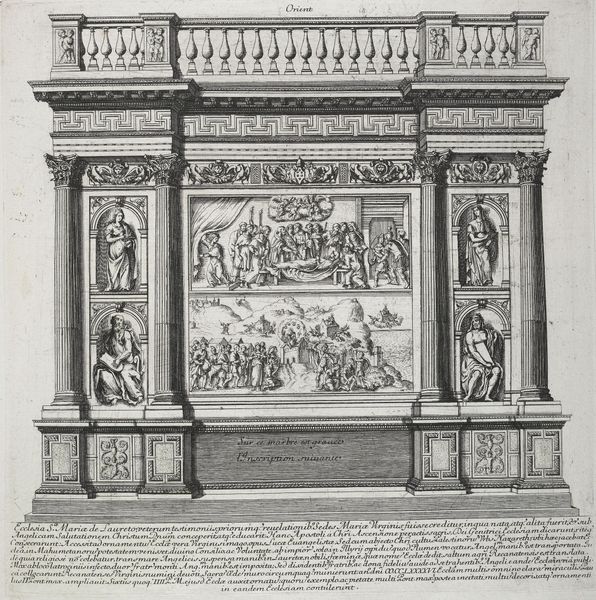
drawing, print, sculpture, engraving, architecture
#
drawing
#
baroque
# print
#
sculpture
#
architecture
#
engraving
#
architecture
Copyright: Public Domain
Curator: "La Galerie de Girardon"—this print by Nicolas Chevalier, dating somewhere in the 1700s, depicts a gallery filled with sculptures, offering a glimpse into the artistic taste of the time. What strikes you first? Editor: A sense of intense order, almost overwhelming, yet also, dare I say, terribly dull? There's such symmetry, such unwavering linearity, and repetition! One long line... What statement is being made by lining all of these statues up in such perfect formation? Curator: Maybe it’s about control, imposing a visual language on artistic expression itself. It’s fascinating how this print captures a physical space dedicated to displaying art—it becomes art about art, and also speaks about commerce. I think if you remove that lens the image relaxes and comes into view as being far from boring. Editor: Precisely! The Baroque aesthetic so clearly on display served the cultural project of absolutism! And these are copies of copies. Mass printing brought these exclusive symbols and spaces to a bourgeois consumer, democratizing access and disseminating political values. What once signaled elite sophistication slowly erodes. Curator: That makes me think about how each piece, originally distinct, becomes part of a larger narrative carefully constructed through the architecture and presentation... Is there a loss of the individual artists and artworks through their consolidation and contextualization? Editor: Indeed! This ordered presentation tells a story, right? But whose story is being prioritized here? The layout and this rigid architecture reframe artistic expression within particular norms and standards, echoing social values around status, privilege, and class. Even if the artist themselves objects. Curator: It feels incredibly curated, as it should! The artist, Chevalier, had a definite vision. Though, it makes one consider, doesn't art change when it enters a gallery? It stops speaking solely for itself, and it starts talking about the context that holds it. Editor: Right, this is how art operates within an ideology. As beautiful as the individual works are, the overarching presentation normalizes ways of thinking about hierarchy and aesthetic value. And that affects how all of these original artists, bound by shared norms or set against them, might express or create freely in their own work. It begs me to want to explore who was allowed in those galleries in the first place! Curator: Perhaps a journey best saved for another conversation, I guess. This makes me so very curious about visiting. What stories we could tell today with that physical space! Editor: Yes, indeed. There is power in that shared experience—then and now. The more things change, the more we need to ask what hasn't changed at all.
Comments
No comments
Be the first to comment and join the conversation on the ultimate creative platform.
